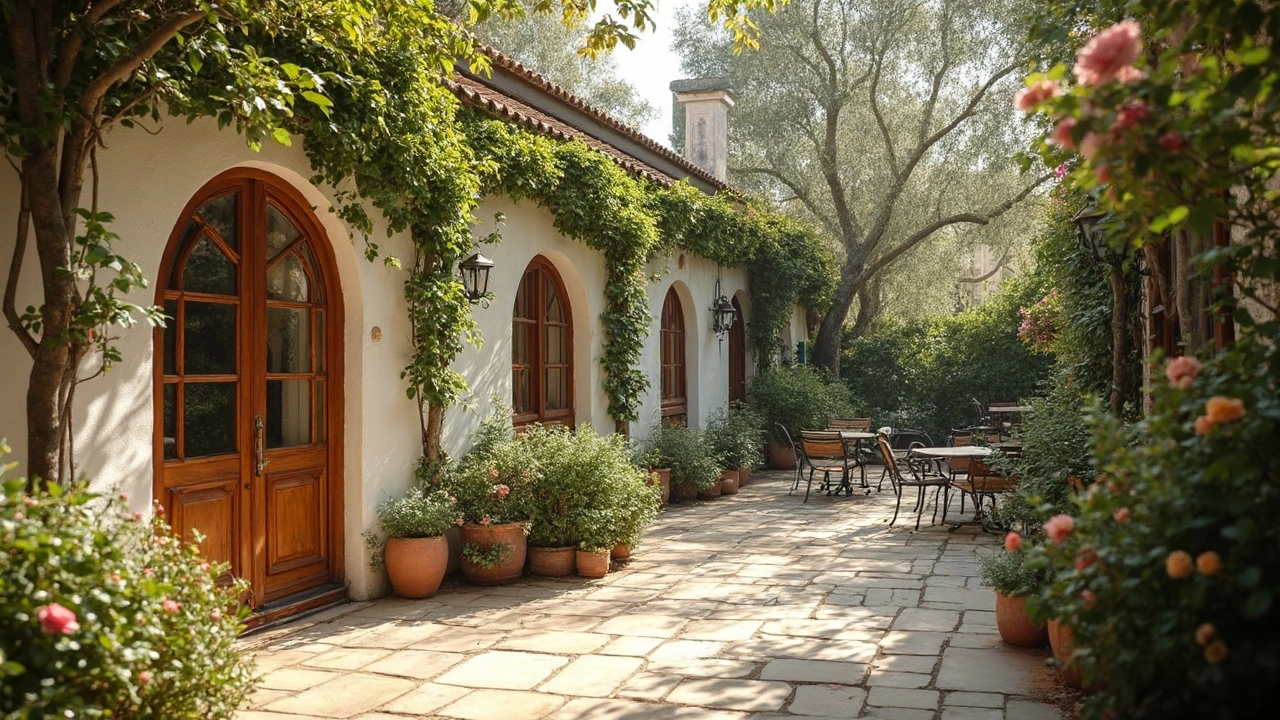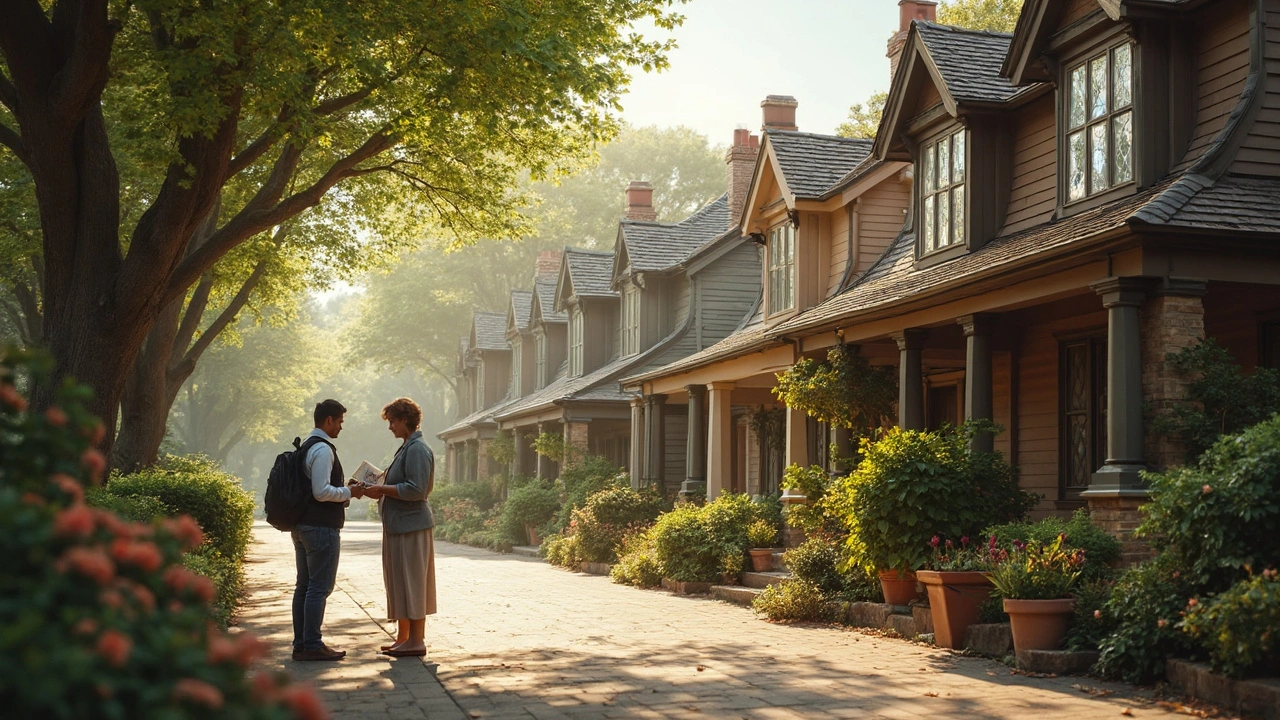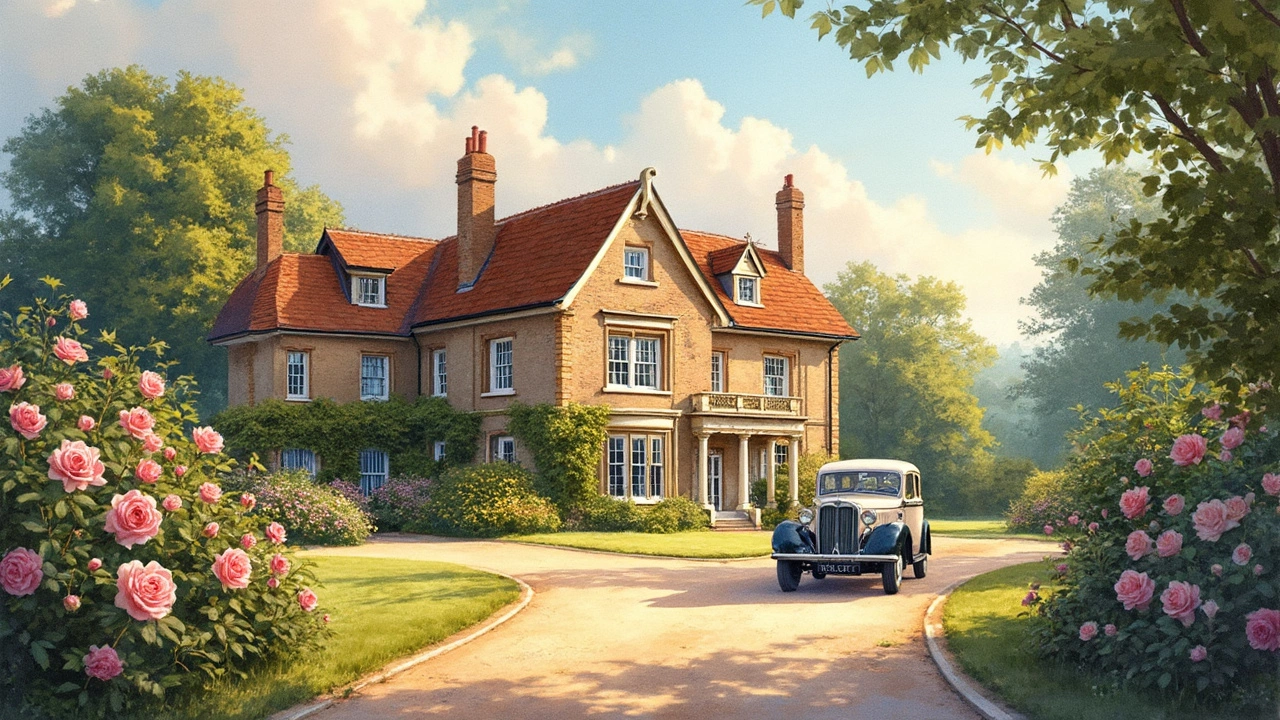Explore Italianate architecture's history, key features, famous examples, and modern design tips. Learn how this Victorian style blends form and function for timeless homes.
Design tips that actually help: mix styles, fix problems, and get results
Want a home that looks intentional, not like a catalog? Good design comes from simple choices you can act on today. Below are clear, style-driven tips picked from classic and modern architecture—colonial trims, mid-century furniture, high-tech glass, Baroque drama—so you can pick what fits your place and budget.
Style-driven tips you can use right now
Colonial look: keep symmetry and clear sightlines. Use matching windows on either side of the front door, add simple crown molding, and choose warm wood floors. If you’re updating, keep original door frames and repaint instead of replacing to preserve character and save money.
Greek Revival & Georgian touches: add columns or pilasters only where they make sense—porches, entries, or a focal wall. Sash-style windows and muted colors (soft white, warm gray) read as authentic without heavy renovation.
Mid-century modern: pick one statement piece—like a teak credenza or an Eames-style chair—and keep surrounding decor minimal. Low, long furniture keeps rooms feeling spacious. Swap heavy curtains for sleek blinds or bare windows to preserve that open look.
Ranch & open-plan homes: emphasize flow. Remove small visual barriers, use area rugs to define zones, and increase natural light with larger windows or sliding doors. Single-story living rewards practical upgrades like wider doorways and a direct indoor-outdoor connection.
High-tech and neo-futurism: integrate tech into visible elements—backlit shelves, thin-profile LED cove lighting, and smart glass where you need privacy. Choose metal finishes and glass to keep the industrial edge.
Baroque & Rococo accents: you don’t need a palace to borrow drama. Add one curved mirror, a sculpted console, or a gilded frame. Keep the rest of the room simple so the ornate piece stands out instead of overwhelming.
How to start a project and avoid common mistakes
Pick one focus per room. Trying to mix five styles equals visual chaos. Decide: mood (cozy, formal, modern), one dominant style, and one secondary accent. For example: Colonial bones + mid-century furniture, or a modern shell + Baroque mirror.
Measure, then buy. Too many people shop by picture and regret scale later. Use painter’s tape on walls and floors to map furniture sizes. That saves returns and frustration.
Preserve smartly. If you have original moldings or windows, repair before replacing. Often paint, reglaze, or minor carpentry keeps the value and look at a fraction of replacement cost.
Finish with small, intentional details: switchplate styles, window treatments, and consistent trim paint. Those choices read as thoughtful design and cost very little compared to structural changes.
Want a fast win? Change lighting layers: add a mix of overhead, task, and accent lighting. Swap one pendant, add a floor lamp, and you’ll see the room’s personality improve immediately.
Use these tips as rules of thumb, not hard limits. Start small, test one change, and build on what works for your home and your life.
Explore why Beaux-Arts architecture refuses to fade away, from its bold style to its surprising modern influences. This article breaks down what makes Beaux-Arts stand out, offers tips to spot it in your city, and reveals how its design ideas are still shaping buildings today. Whether you're a curious city-walker, a design lover, or just want to spruce up your own space, you'll find practical info and cool facts here. Get ready to see your surroundings in a whole new light. No fluff, just what you need to know.
Postmodern architecture threw out the rulebook, swapping straight lines and strict forms for playful shapes and unexpected details. This article explores what makes postmodern design so different, highlights famous buildings, and shows how these bold ideas changed cities around the world. You'll get practical tips for recognizing postmodern features and find out how this style still influences today's buildings. Whether you're a design lover or just curious, this guide breaks down the postmodern movement in plain English. Get ready for a tour that might change how you see your city.
Mediterranean Revival architecture is more than just a pretty facade—it’s a style packed with personality and practical ideas for today’s homes. This article digs into why this timeless look keeps winning hearts, unpacks the roots of its design, and shows how you can work it into modern spaces. Packed with fun facts and down-to-earth tips, it’ll help you see why arched windows, clay tiles, and sun-drenched patios still turn heads. Whether you’re itching to renovate or just dreaming, get ready to find inspiration in the details. Explore the culture, the craft, and the clever ways this style stays fresh.
This article unpacks the American Craftsman home style—what sets it apart, why people love it, and how you can spot one from a mile away. We’ll dig into its origins, signature features, and real-world tips for adding Craftsman charm to your home. Expect clear advice, interesting facts, and practical insights to help you appreciate and maybe even own a true Craftsman house. Dive into the heart of American home design in a way that’s easy to understand.
Expressionist architecture ditches the straight lines and boring symmetry for wild shapes and emotional impact. This article peels back the curtain on what makes these buildings stand out, how they came about, and why they still turn heads today. You'll get real-life examples, quirky facts, and even some tips if you want to bring that bold style into your own space. Whether you're a design nerd or just curious why some buildings look like they're from outer space, here's your guide to all things expressionist. Jump in and see why this movement still makes a splash.
Colonial architecture, with its blend of cultural influences and timeless design principles, offers a fascinating journey into the past. Uncover the secrets of its enduring appeal, learn tips on restoring colonial homes, and discover how to blend traditional charm with modern living. Whether you're an architecture enthusiast or dreaming of a heritage-inspired home, this guide offers useful insights and practical advice.
Italianate architecture, inspired by the romantic villas of Renaissance Italy, found its way into homes and public buildings in the 19th century. This style boasts distinctive features such as low-pitched roofs, tall windows, and decorative cornices. It embraces both elegance and functionality, making it a popular choice in urban settings across the world. Today, homeowners seek Italianate design for its timeless elegance, blending historic charm with modern living. Learn how to recognize and incorporate this style into your own home.








